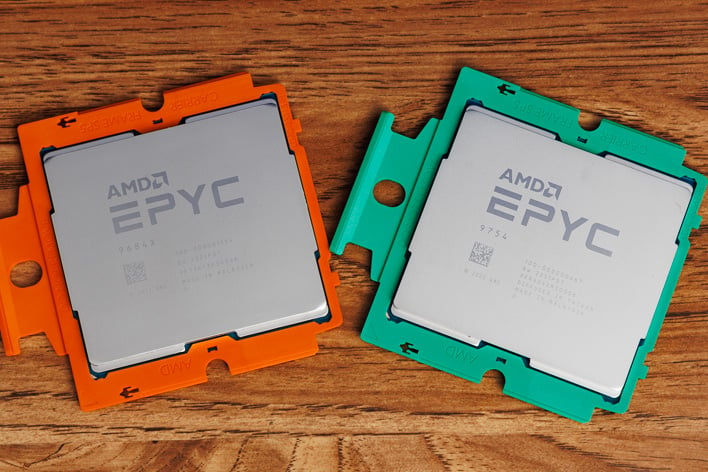AMD Bergamo And Genoa-X Performance Review: EPYC Chips For Big Iron Workloads
AMD's EPYC 9754 And EPYC 9684X Processors Take On The Changing Needs Of HPC And Cloud Hyperscale Workloads
| AMD EPYC 9754 (Bergamo) and EPYC 9684X (Genoa-X) Processors AMD's latest Zen 4 EPYC server processors scale cache and optimized cores to amplify specialized HPC and hyperscale cloud workloads.
|
|||

|

 |
||
Simply having a one-size-fits all approach to cloud compute is no longer feasible for a semiconductor company that needs to compete at the rate of change in this space. These different workloads stress processors in unique ways. General performance CPUs will still drive a majority of the market for the foreseeable future, but we are now seeing both AMD and Intel offer optimized solutions for specialized cloud workloads as well.
AMD Bergamo And Genoa-X: Performance-Optimized For Very Different Workloads
Such is the case with AMD’s Genoa-X and Bergamo processors we have in for review today. Both are built on the Zen 4 foundation introduced with Genoa last fall. In fact, Genoa-X is Genoa for all intents and purposes, just with a layer of 3D V-Cache bolted atop the core complex dice (CCDs). Like AMD's consumer Ryzen X3D processors using this tech for gaming, the 3D V-Cache can significantly benefit processing demands of large datasets that are presented by many HPC workloads.Bergamo, on the other hand, is a different animal, though genetically related all the same. These CPUs employ the AMD Zen 4c architecture, which distills Zen 4 into a smaller footprint for better scalability. This comes at the cost of cache and clock speeds but allows 16 cores to be housed in a single CCD instead of the 8 cores we find with Zen 4. In theory, these concessions have minimal impact for hyperscalers seeking massive core counts above all else. Regardless, be sure to check out our launch coverage of Genoa-X and Bergamo for more of the nitty-gritty about what makes each so special.
Today, we are focused on the real-world performance each can offer across a myriad of cloud and HPC applications. AMD sent us a pair each of its flagship EPYC 9684X (Genoa-X) and EPYC 9754 (Bergamo) processors. Each EPYC 9684X Genoa-X CPU features a full complement of 96 cores across 12 CCDs, making for a total of 192 cores and 384 threads in our dual processor 2U Titanite platform test system. Each CCD gets 96MB of L3 cache thanks to the layer of 3D V-Cache making for a healthy total of 1,152MB of L3 cache per processor, up from 384MB in the equivalent EPYC 9654 Genoa processor. Unlike AMD's desktop X3D parts, this Genoa-X chip retains the same max boost clock of 3.7GHz and cTDP window of 320-400W of its Genoa counterpart, but does have a higher default TDP sitting at 400W instead of 360W.
The EPYC 9754 Bergamo CPU ramps core counts up to 128, making for a total of 256 cores and 512 threads in a 2P system. With half the L3 cache per core compared to Genoa, this makes for a total of 256MB of cache per socket. Core frequencies also dip to 2.25GHz base clock with a boost of 3.1GHz. All these cores still demand a lot of power, however, yielding a default TDP of 360W with a 320-400W cTDP range. I/O is otherwise equivalent to Genoa with 12 channels of DDR5 memory, PCIe Gen 5 support, and it has the full x86 ISA of Zen 4.
We're going to have more benchmarks added to our gauntlet this time around with these decidedly differentiated chips, so let’s get to them without any further ado…











